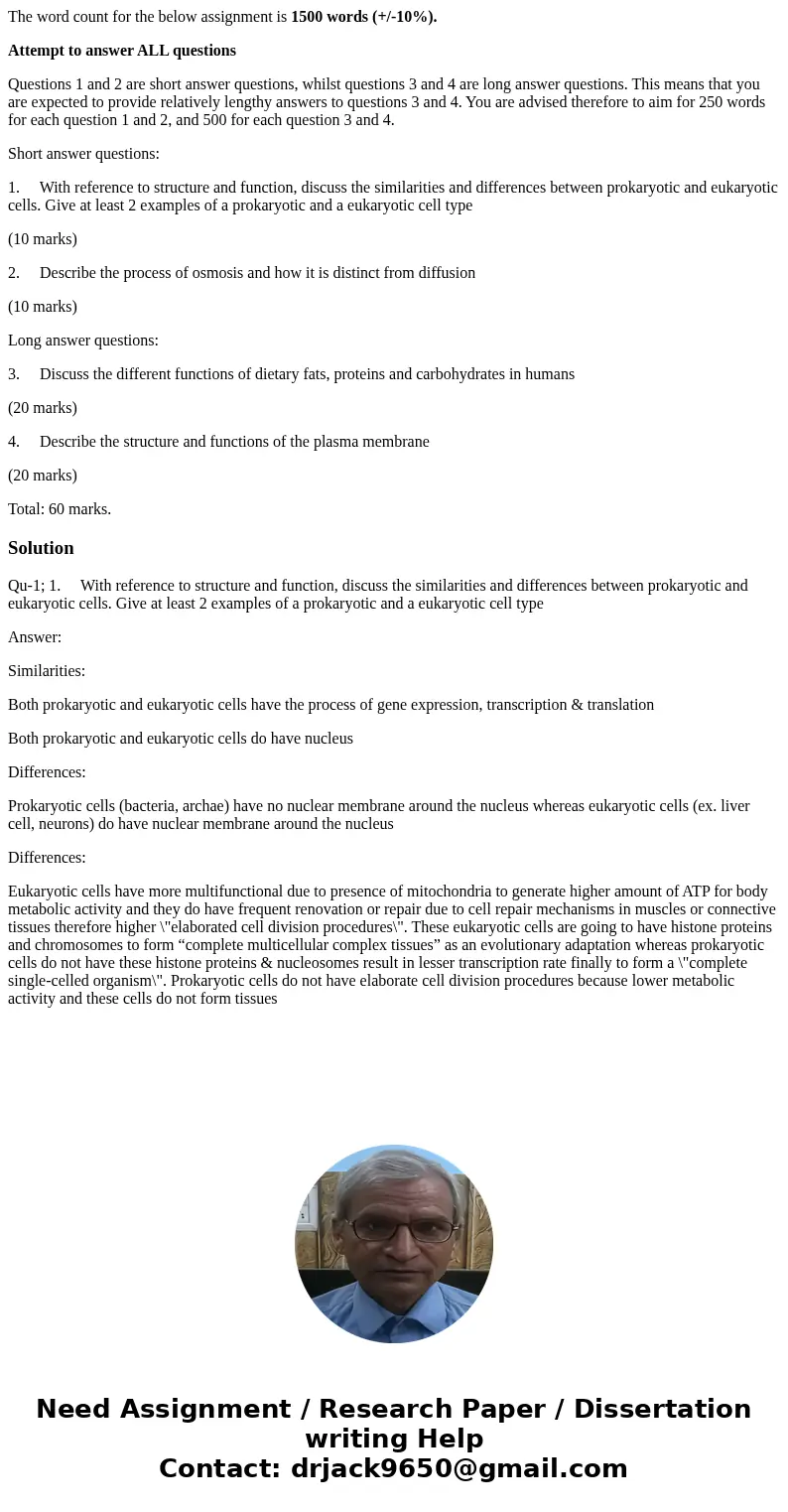The word count for the below assignment is 1500 words 10 Att
The word count for the below assignment is 1500 words (+/-10%).
Attempt to answer ALL questions
Questions 1 and 2 are short answer questions, whilst questions 3 and 4 are long answer questions. This means that you are expected to provide relatively lengthy answers to questions 3 and 4. You are advised therefore to aim for 250 words for each question 1 and 2, and 500 for each question 3 and 4.
Short answer questions:
1. With reference to structure and function, discuss the similarities and differences between prokaryotic and eukaryotic cells. Give at least 2 examples of a prokaryotic and a eukaryotic cell type
(10 marks)
2. Describe the process of osmosis and how it is distinct from diffusion
(10 marks)
Long answer questions:
3. Discuss the different functions of dietary fats, proteins and carbohydrates in humans
(20 marks)
4. Describe the structure and functions of the plasma membrane
(20 marks)
Total: 60 marks.
Solution
Qu-1; 1. With reference to structure and function, discuss the similarities and differences between prokaryotic and eukaryotic cells. Give at least 2 examples of a prokaryotic and a eukaryotic cell type
Answer:
Similarities:
Both prokaryotic and eukaryotic cells have the process of gene expression, transcription & translation
Both prokaryotic and eukaryotic cells do have nucleus
Differences:
Prokaryotic cells (bacteria, archae) have no nuclear membrane around the nucleus whereas eukaryotic cells (ex. liver cell, neurons) do have nuclear membrane around the nucleus
Differences:
Eukaryotic cells have more multifunctional due to presence of mitochondria to generate higher amount of ATP for body metabolic activity and they do have frequent renovation or repair due to cell repair mechanisms in muscles or connective tissues therefore higher \"elaborated cell division procedures\". These eukaryotic cells are going to have histone proteins and chromosomes to form “complete multicellular complex tissues” as an evolutionary adaptation whereas prokaryotic cells do not have these histone proteins & nucleosomes result in lesser transcription rate finally to form a \"complete single-celled organism\". Prokaryotic cells do not have elaborate cell division procedures because lower metabolic activity and these cells do not form tissues

 Homework Sourse
Homework Sourse